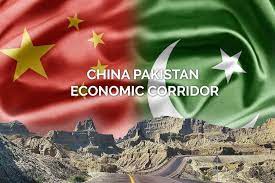Rafiul Haq
In 2013, China and Pakistan signed an important agreement for economic development and regional connectivity. When Chinese President Xi Jinping paid an official visit to Pakistan in 2015, the government announced a two-day holiday in Islamabad as a protocol to deal with any untoward incident. During the meeting, the governments of both sides agreed that with China’s cooperation and technical assistance, the desired trade routes between Pakistan and China will be completed in the next 15 years.
Under CPEC, roads, railways and pipelines will be built to transport gas, oil and goods from Pakistan’s Gwadar port to Kashgar in the next ten years.Two centuries ago, famous French dictator Napoleon Bonaparte predicted about China’s capabilities and potential: “China is the sleeping lion in Asia, let it sleep, when it wakes up it will shake the world.” Perhaps this is proving true today. Beijing awoke from its deep slumber when French President Francois Hollande said, “Today the lion is awake, but peaceful, happy and civilized.” China is an Asian economic powerhouse.
It struggles to maintain practical and peaceful economic diplomacy because of its historical legacy. Therefore, in this global economic world, China is the only country that has the potential to directly challenge the hegemonic design of the American leadership and influence in the world. China is not only the fastest growing market in the world but also an important manufacturing country in the international world. Over the past two decades, China has initiated global investment, trade and capital flows to the world and has maintained the desired economic growth.
Despite being the most populous country in the world, its per capita income is increasing every year, changing the living standards of the people living there and turning the country into a global economic power. After Deng Xiaoping came to power in 1978, he decided. And he introduced the “Open Door Policy” to make China an ‘Asian giant’, allowing some 680 million Chinese people to escape the poverty in which they had been thriving. China is the world’s emerging and leading economic power, growing at an average of 10 percent per year compared to the rest of the economic world.
The leading British magazine The Economist has predicted that in the coming years, China will overtake the US as the largest economy, taking advantage of the latest technology. Moreover, China represents about 30 percent of the global GDP of US$23.19 trillion, which is higher than the GDP of the US, on the other hand, at US$19.42 trillion.
The China-Pakistan Economic Corridor (CPEC) is an important part of the BRI, a project to promote and build a land-based “Silk Road Economic Belt” connecting regional countries to China via Pakistan. This will in turn have a huge positive impact on the global economic system. Because this “Belt” is a global infrastructure network and connectivity development project that will stretch from Xinjiang (China) through the Central Asian Republics (CARs) to Moscow and reach Europe.
Similarly, the Maritime Highway will create a chain of ports and coastal infrastructure from South and Southeast Asia to East Africa and the Northern Mediterranean.
In fact, the BRI aims to directly link investment with Asia, Europe, the Middle East and Africa with a large logistics and transport network spanning nearly 65 countries. According to the World Bank report, BRI is an excellent project for investment. One impression is that China is spending about US$40 trillion in global investment. In return, billions of rupees will be collected in terms of tax returns and these projects will create vast employment opportunities. It is also said that BRI is a grand plan to integrate China into the global economy. The 17 economic and industrial projects in this series highlight the fact that China has adopted a unique economic approach to government-to-governmecooperation while improving the economic systems of dependent and middle-income countries along the Silk Road.
But it was a crucial challenge for China how to connect other countries in the region with China. Pakistan was a reliable and viable country for China to complete this mega project within the stipulated period. Since 1951, friendly political, diplomatic and historical relations have been established between China and Pakistan. Both helped each other in times of need and supported each other at various regional and international forums. Currently, she is engaged in the construction of the China Pakistan Economic Corridor (CPEC), a key part of China’s ambitious One Belt One Road (OBOR) economic plan.
Later transformed into the Belt and Road Initiative (BRI), it is a regional connectivity plan to increase geographic connectivity and improve road, rail networks that will promote economic growth and free trade in an era of economic globalization. And in the near future it is being seen as a major breakthrough towards business and employment. The international community has expressed its views on this project in different ways. However, it can be hoped that CPEC will help improve the economy of regional countries as it will lead to trade and economic stability and technological advancement.
In particular, CPEC will provide an opportunity for China and Pakistan to promote regional connectivity, trade growth and infrastructure development. Which will promote economic prosperity, economic freedom and political stability in Pakistan. And will promote sustainable nexus for peaceful coexistence. In this regard, Pakistan should adopt a speedy, long-lasting and stable policy for CPEC to counter the nefarious ambitions of a traditional rival like India.
rafihaqqani717@gmail.com







